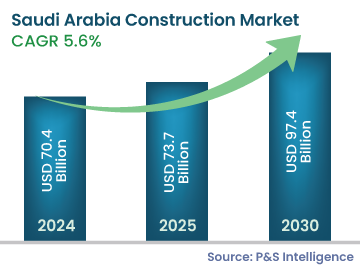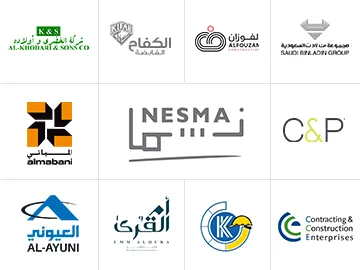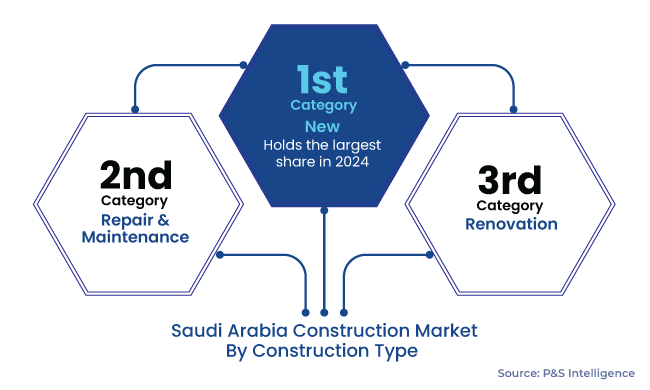Saudi Arabia Construction Market Analysis
The Saudi Arabian construction market will generate revenue of USD 70.4 billion in 2024, which is expected to witness a CAGR of 5.6% during 2024–2030, to reach USD 97.4 billion by 2030. This is due to the significant investments made by the government in transportation, renewable energy, industrial infrastructure, housing, and tourism projects in the country. According to Arab News, this kingdom has taken the lead in the MEA construction market, accounting for 67% of the total project value in the first half of 2023.
Additionally, the market is driven by the Saudi Vision 2030 national development plan, which aims to diversify the economy, reduce reliance on oil and transform multiple sectors for sustainable growth. This plan includes various projects, such as Roshn project, Qiddiya Entertainment City, Neom Future Cities, and the Red Sea project. All of them are playing a vital role in boosting construction opportunities in Saudi Arabia.
Moreover, the expansion of the tourism and hospitality infrastructure is one of the major forces behind the booming construction activities in this kingdom. Cities are becoming more livable and resistant to environmental changes with the integration of green infrastructure and other sustainable practices. One of the most-significant projects involving green construction, especially of the hospitality infrastructure, is the Red Sea Project, which, once complete, would include luxury resorts, a natural archipelago, archaeological treasures, and desert landscapes.
According to the International Trade Administration, the Red Sea Project would cover more than 50 islands as well as stretch for 34,000 square kilometers between the cities of Umluj and Al Wajh. This would be a major tourist destination for travelers from around the globe.
Furthermore, the Saudi Arabian construction market is adopting advanced technologies to improve project execution, management, and overall life and quality. The growing utilization of advanced solutions, such as 3D printing, prefabricated modules, electrically powered machinery, IoT, smart devices, building information modeling software, and AI-driven analytics, results in smooth construction practices, optimal use of resources, removal of conventional barriers, and promotion of sustainable development. This increasing focus on sustainability in the infrastructure sector is driving the adoption of green building methods, usage of eco-friendly materials, and implementation of low-power-consumption designs.




